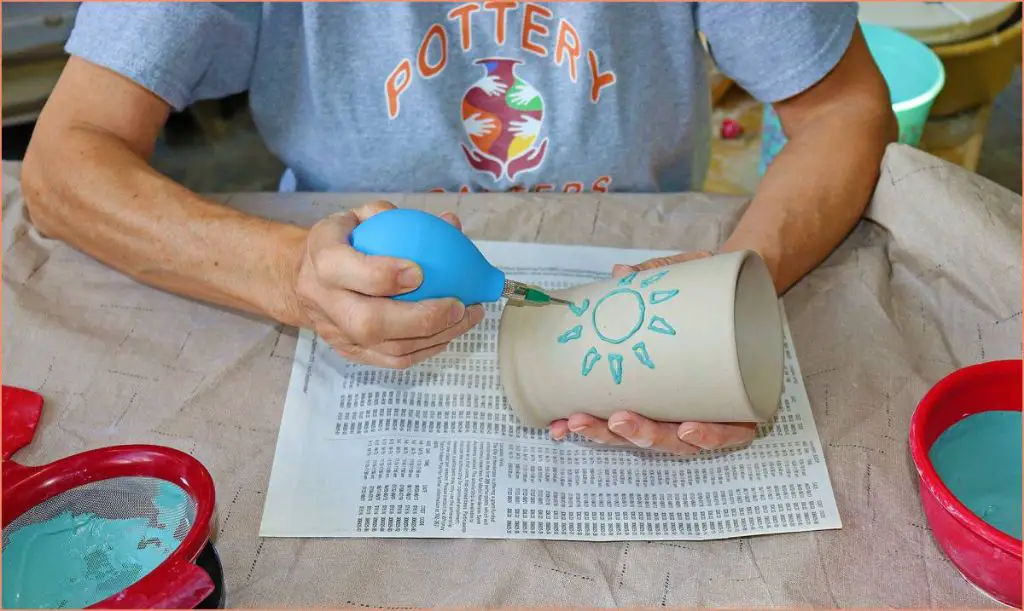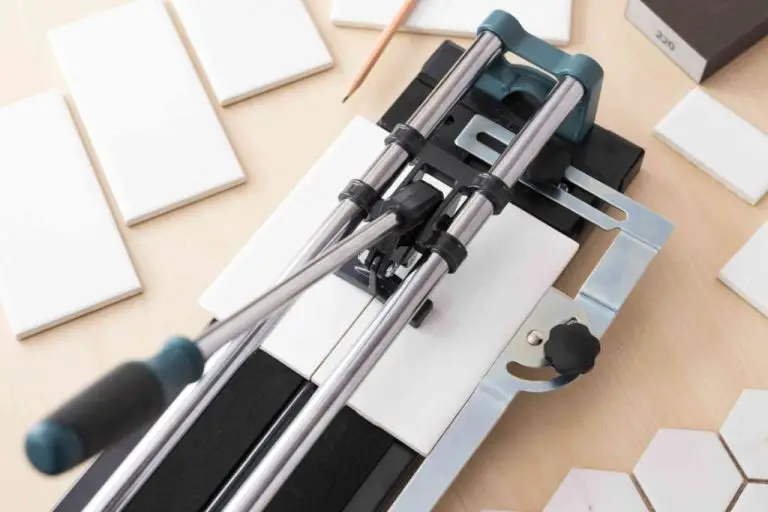How Do You Center A Large Amount Of Clay?
Centering clay is a fundamental skill in pottery that involves shaping a lump of clay into a symmetrical cone on the pottery wheel. It is an essential first step in throwing pottery on the wheel, allowing you to create an even-walled piece with a balanced shape (Master the Art of Centering Clay!). Properly centered clay will spin evenly without wobbling, and provides a base for further shaping the desired form. Learning to center takes patience and practice, but is crucial for successful pottery making.
Centering allows you to start with uniform clay so pieces have even walls and shapes, preventing cracking and flaws in the final fired ware (How To Center Clay | Video Art Lessons). It enables symmetry and balance in thrown pottery. Centering also lets you shape delicate or thin-walled pieces that require evenly distributed stress and stability when throwing and turning the clay. Mastering the skill makes the rest of the throwing process easier and more precise.
Prepare the Clay
Before centering clay on the potter’s wheel, it is important to properly prepare the clay by wedging and kneading it. This removes air pockets and evenly distributes moisture throughout the clay, allowing for proper centering.https://www.thesprucecrafts.com/how-to-center-clay-potters-wheel-2745815
Wedging involves cutting the clay into chunks, slamming it against the wedging table, and reforming it into a ball shape. This process squeezes out air bubbles and blends the moisture. Kneading is then done by pressing into the clay ball with the palms to further mix the clay and prepare it for centering.
Taking the time to properly wedge and knead the clay ensures it is uniform in consistency and ready for the centering process. Well prepared clay will center smoothly and evenly without air pockets or dry spots.
Center the Clay
Centering the clay on the pottery wheel is one of the most important steps in throwing pottery. Properly centered clay leads to evenly shaped pots with uniform walls. Follow these steps for centering clay on the wheel:
- Prepare a clay ball slightly larger than your desired finished piece. Form it into a rough cone shape with a flattened bottom.
- Place the cone on the wheel head and apply water for lubrication. Turn on the wheel at a slow, steady speed.
- With both hands, gently press down on the clay while keeping it centered. Apply even, firm pressure as the clay spins.
- Stop the wheel periodically. Use your thumbs to compress the clay further into the wheel head to center it.
- Continue compressing and centering until no wobble remains. The clay should spin smoothly without drifting off-center.
- When centered, the clay will have an evenly rounded top and flat, thick base. Use your palms to shape it into a dome.
- Keep wheel speed steady. Do not remove hands fully until the desired dome shape is achieved.
Patience and practice lead to mastery in clay centering. Refer to online videos like those at https://www.tiktok.com/tag/potterywheelbeginner for visual guides.
Shape the Clay
Once the clay is centered on the wheel, it’s time to begin shaping it into the desired form. Start by using your thumbs to open up the centered clay into the basic shape you want (such as a cylinder for a vase). Applying even pressure, press your thumbs into the sides of the clay and move them upwards to form the walls. As you shape, use your fingers on the inside and outside to refine the form. Work to keep an even wall thickness throughout the piece. According to Creative Arts Studio, “Use the sides of your hands to compress the walls and elongate the form. Smooth the walls by applying pressure and compressing the clay at different angles and directions.”[1]
[1] “How to Center Clay: A Step-by-Step Guide.” Creative Arts Studio, 7 Sept. 2022, https://creativeartsstudios.com/how-to-center-clay-a-step-by-step-guide/. Accessed [todays date].
Refine the Shape
Once you have shaped the basic form, the next step is to refine the shape by smoothing and trimming any imperfections. As the clay spins on the wheel, gently run your hands along the surface to compress the clay and eliminate any bumps or wrinkles. Carefully trim away any excess clay using a metal rib or trimming tool. Work slowly and methodically to perfect the shape.
It takes practice and a delicate touch to refine the form without marring the surface. Rotate the wheel often to access all sides. Focus on making smooth transitions from one area to the next. Developing a symmetrical, standardized shape takes time and patience. Resist the urge to rush through this important step.
Pay special attention to the rim, foot, and walls. The rim should have a clean, crisp edge. The foot needs an even thickness to properly support the piece. Any bulges or inconsistent areas on the walls can be gently compressed or trimmed down. Work the entire surface until you achieve the precise shaped desired.
As you refine the form, frequently stop the wheel to inspect your progress. Look for any imperfections from all angles in the light. Making minor adjustments and gradually perfecting the shape creates a professional, artisanal look.
According to one pottery enthusiast on Reddit, “After I cone up and am pushing it back down, there is ALWAYS a tiny hole in the middle” (source). Be patient and take your time smoothing out any small holes or imperfections to achieve a refined, flawless shape.
Add Decorations
Once the clay has been centered, shaped, and refined, the next step is to add decorations if desired. There are many options for decorating centered clay. Some popular techniques include:
- Carving or incising: Using metal tools to carve line patterns or images into the clay surface.
- Slip trailing: Trailing liquid clay slip onto the surface to create raised designs.
- Stamping: Pressing patterned stamps onto the clay to imprint designs.
- Embossing: Using embossing tools to create raised relief images.
- Piercing: Using needles or drill bits to pierce holes or patterns into the clay.
- Combing: Dragging a serrated tool across wet clay to create parallel ridges.

Decorations can be minimalist or elaborate. The choices depend on the style and aesthetic of the finished piece. Decorating takes patience and practice to master different techniques. But it allows centered clay to become a beautiful work of art.
For inspiration on decoration methods, see the examples at How to centre clay – The one sided method. Beginners Guide.
Dry the Clay
Properly drying clay before firing is a crucial step that can make or break your final piece. As clay dries, the water evaporates out of it. If clay is fired before it is completely dry, the remaining water will turn to steam and can cause cracks, warps, or even explosions.
There are a few key things to keep in mind when drying clay:
- Let clay air dry slowly at room temperature. Avoid drying clay in direct sunlight or near heating vents, as uneven drying can cause cracks. Ideal drying conditions are around 70°F with 50% humidity.
- Cover damp clay with plastic wrap or put it in a closed plastic bag to slow moisture loss. Allow air to circulate around the clay if covering it.
- Place clay on gypsum plaster bats or boards as they wick moisture out evenly. Plaster also prevents clay from sticking while drying (https://www.dickblick.com/products/blick-pottery-plaster-no-1/?fromSearch=%2Fsearch%2F%3Fsearchword%3Dpottery+plaster&pr_rd_page=5).
- Flip pieces over at least once during drying to prevent warping.
- Use a moisture meter to test clay throughout drying. Clay is ready for firing when the moisture content is below 0.5%.
- When clay feels cool to the touch, has no dampness on the surface, and has hardened adequately, it is dry enough to fire.
Taking the time to properly dry clay eliminates many potential firing faults. Patience during the drying stage allows moisture to evaporate evenly throughout the piece before firing.
Fire the Clay
Once your clay creation has dried thoroughly, it is ready to be fired in a kiln. There are two main firing stages – bisque firing and glaze firing. Bisque firing refers to the first firing of the clay, which converts the clay from its soft, wet state into a hard, permanent ceramic material. According to Throwing, Firing, & Glazing Pots, bisque firing typically takes place at temperatures between 1550-2100°F. The clay needs to be fired to the proper temperature in order for the chemical changes to take place within the clay body.
During bisque firing, it’s important to slowly increase the temperature and incorporate holds to allow the clay time to release any trapped gases and shrink gradually. Ramping up the temperature too quickly can cause cracks or even explosions. Once the target temperature is reached, allow the kiln to cool down slowly as well. The bisque firing makes the clay porous and ready to accept glazes.
Glaze firing refers to the second firing process after glazes have been applied to the bisque ware. According to the video How to Throw, Glaze and Fire a Pottery Inkwell, glaze firing usually takes place at lower temperatures between 1800-2200°F. It melts the glazes onto the clay body to create a glossy, non-porous surface. Glaze firing schedules vary depending on the makeup of the glazes used. It’s important to follow the firing instructions provided by the glaze manufacturer. Cool the kiln slowly just like with bisque firing to prevent cracking.
With proper bisque firing and glaze firing, your clay artwork will be transformed into a strong, finished ceramic piece ready for display and use!
Troubleshooting
Centering clay can be tricky at first. Here are some common problems potters run into when centering clay on the wheel and solutions to try:
Clay is off-center
If the clay wobbles and refuses to center, first check that the wheel is level. Shim under the legs if needed to level it. Then, try centering again using firmer pressure and bracing your elbows on your legs for stability. Slow the wheel down and really focus on making small refinements to guide the clay into a centered position.1
Clay won’t center at all
If you can’t get the clay centered no matter what, the clay may be too wet or too soft. Let it sit out to dry and firm up slightly, then try again. You can also try wedging or kneading the clay more to improve consistency before centering. Avoid overworking the clay though as that can cause issues. 2
Clay sticks to hands
If the clay continuously sticks to your hands while centering, try dusting your hands with a bit of cornstarch or dry clay. You can also dip your hands in water frequently. The key is finding the right moisture level so the clay moves smoothly under your hands without sticking.
Conclusion
Centering clay on the potter’s wheel takes practice but is an essential skill in pottery. By following the step-by-step process of preparing the clay, mounting it on the wheel, applying pressure and making adjustments, you can learn to center even large amounts of clay.
Properly centered clay allows you to open and shape your pottery into a symmetrical form. It distributes the clay evenly so your pot maintains stability and balance as you work. Mastering centering makes the rest of the pottery-making process easier and helps ensure uniform wall thickness. With enough patience and persistence, centering clay can become a satisfying and meditative experience.
Learning to center opens up creative possibilities as you gain control over the clay. Whether making mugs, bowls, vases or more advanced forms, proper centering is the foundation. As you develop your skills and technique, you’ll find centering clay to be an enjoyable first step in crafting beautiful pottery.
[Content from The Spruce Crafts and Creative Arts Studio websites.]



